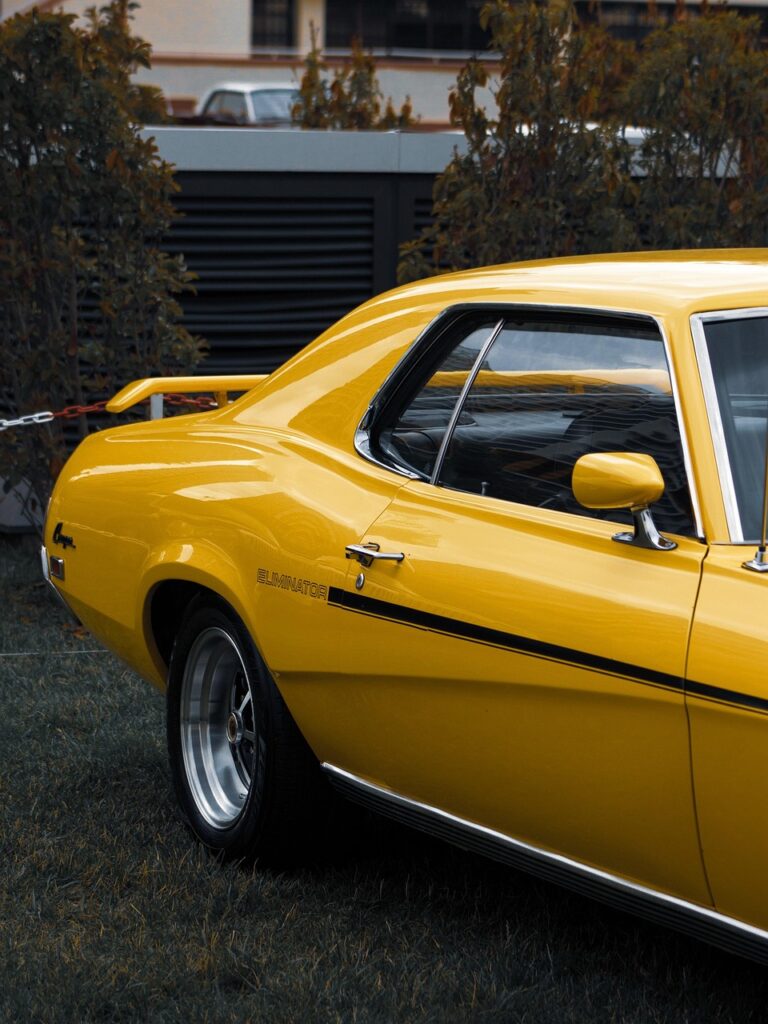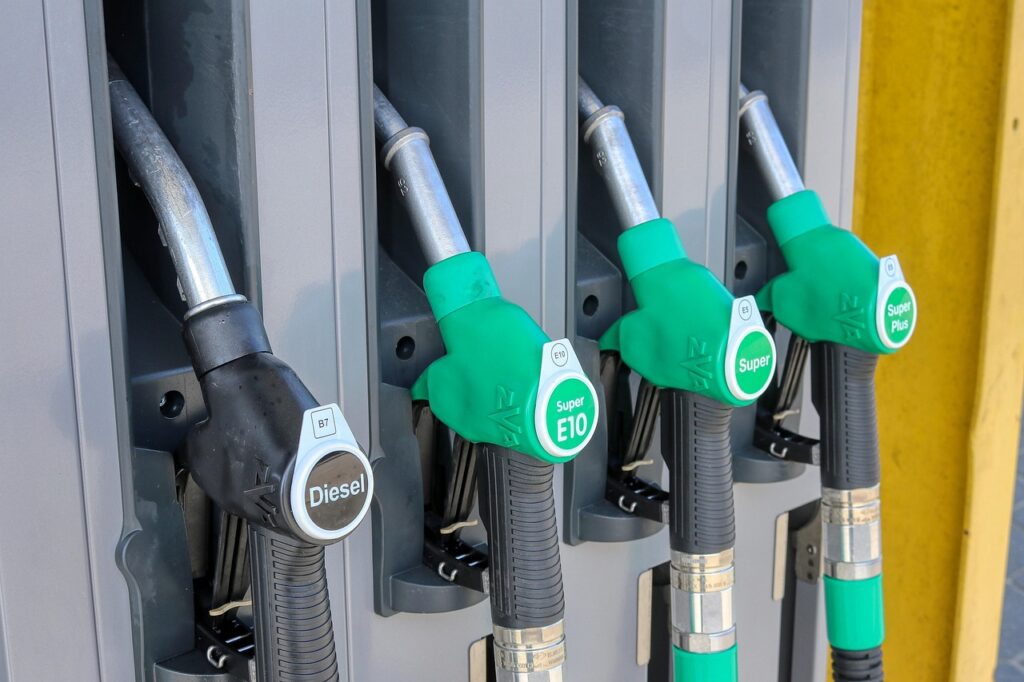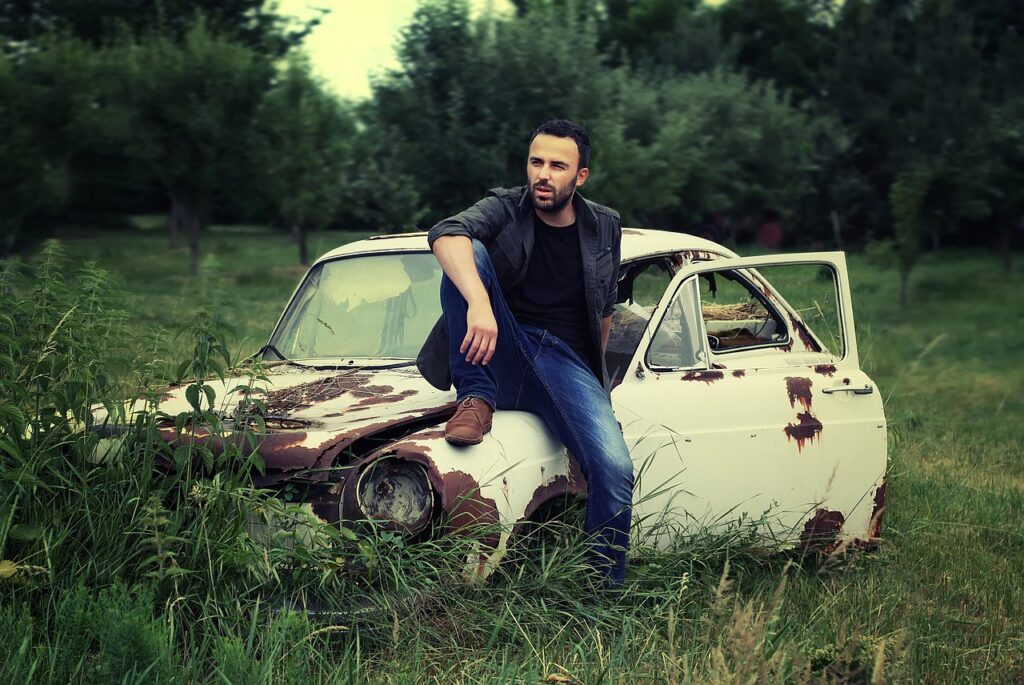
The roar of an engine, the tangible feel of the road beneath your hands, a design that speaks of an era rather than a focus-grouped committee – these are sensations that many automotive enthusiasts argue are increasingly rare in today’s technologically advanced vehicles. It’s a debate that echoes through garages, car shows, and online forums: “Are old cars truly better than new ones, or is it merely nostalgia clouding our judgment?”
While the automotive industry has undoubtedly made significant strides in safety, speed, and fuel efficiency in recent years, a passionate contingent of car aficionados continues to champion the virtues of classic vehicles. This isn’t just about sentimental longing for bygone eras. There’s a profound, logical basis to the assertion that older cars, spanning from revered classics to well-maintained vintage models, offer a uniquely compelling ownership experience that modern counterparts often struggle to replicate.
From their fundamental engineering philosophies to the visceral connection they forge with their drivers, older cars present a distinct package of attributes that resonate deeply with those who view driving as more than just a means of transportation. In this in-depth exploration, we’ll peel back the layers of automotive evolution to examine 12 real, tangible reasons why many believe older cars hold a significant edge over their newer, often more complex brethren. For this discussion, we’ll consider an “old car” as anything 20 years or older, acknowledging the rich tapestry of automotive history. Join us as we unpack these compelling arguments, inviting you to discover for yourself the enduring allure and practical advantages that keep the flame of older cars burning brightly.
1. **Unmatched Simplicity of Design and Engineering**
One of the most frequently cited and undeniably compelling arguments for the superiority of older cars lies in their inherent simplicity of design and engineering. Unlike the labyrinthine complexity of modern vehicles, which are often brimming with a multitude of sensors, intricate electronic circuits, and sophisticated onboard computer systems, older cars adhere to a more straightforward mechanical philosophy. This fundamental difference translates directly into fewer potential points of failure, a characteristic that resonates deeply with owners seeking reliability and ease of maintenance.
Modern cars, for instance, are commonly equipped with ultrasonic, lidar, and mass airflow sensors, along with complex electrical circuits that intricately link to critical mechanical components such as the engine and transmission. While these advancements contribute to various functionalities, they also introduce a significant vulnerability: any glitch or malfunction within these elaborate electronic systems can severely impede the vehicle’s overall performance. The reliance on such high-tech components means that a simple sensor fault or even water damage can render a sophisticated engine management system inoperative, leading to costly and often specialized repairs.
In stark contrast, old cars are built on a bedrock of mechanical integrity. Their systems are predominantly mechanical, requiring less reliance on sensitive electronics that can be temperamental or prone to obsolescence. This simpler architecture means there are fewer intricate components to break down, and troubleshooting often requires less specialized equipment, making diagnosis and repair more accessible. For enthusiasts, this means a more predictable ownership experience, where issues are often identifiable and resolvable without requiring a degree in automotive electronics.
The beauty of this simplicity extends beyond just repairability; it speaks to a philosophy of engineering where robustness and straightforward functionality were paramount. Components were often designed with longevity and interchangeability in mind, allowing for easier sourcing of spare parts and more straightforward replacement procedures. This foundational simplicity ensures that, with regular mechanical upkeep, an old car can remain a remarkably dependable mode of transportation, free from the exasperating complexity that sometimes plagues its contemporary counterparts.
Read more about: Crossover Suspension Showdown: 10 Models Evaluated for Long-Term Reliability Before 95,000 Miles

2. **Timeless Aesthetics and Distinctive Styling**
Walk through any modern car dealership, and you might notice a striking similarity among many of the new models, particularly within competing segments. Manufacturers often converge on similar design languages, leading to a homogeneity that, while perhaps aerodynamic or market-driven, can leave many vehicles feeling indistinguishable. This widespread trend often prompts automotive enthusiasts to assert, quite passionately, that older cars simply look better, possessing a timeless exterior design and a distinct persona that modern cars frequently lack.
Older cars, by virtue of their historical context, hail from an era when design individuality was a competitive differentiator. Each model, and often each manufacturer, pursued a unique aesthetic vision, resulting in a rich tapestry of forms, lines, and distinctive features that immediately identify them. Consider the iconic profiles of a 1990 Dodge Viper GTS, a Lamborghini Diablo, an Acura NSX, or the enduring elegance of an Aston Martin DB4 – these are vehicles whose designs are celebrated, remembered, and even revered as works of art, transcending mere transportation.
This singular appeal is precisely why classic cars are not merely vehicles but often cherished collectibles, frequently commanding prices that surpass their newer iterations. Their unique character and visual charm make them natural stars, which is why Hollywood regularly features old cars in films like *Fast and Furious* and *John Wick*, using their distinct presence to captivate audiences and imbue scenes with an undeniable sense of cool. These cars don’t just move people; they move emotions, creating an immediate and memorable impact that is often absent in the standardized designs of today.
Beyond their immediate visual impact, the distinctive styling of older vehicles offers a deeper connection. Their aesthetic isn’t just about surface beauty; it often reflects the engineering and cultural ethos of their time, giving them a rich story that newer cars, designed to blend into a crowded market, simply can’t tell. This personality, ingrained in every curve and contour, ensures that an older car turns heads and sparks conversations, becoming a statement piece rather than just another vehicle in traffic.
Read more about: 18 Classic Boomer Cars Millennials Don’t Want: Why Younger Generations Pass on These Icons
3. **Cost-Effectiveness Throughout Ownership**
While the initial purchase price of a brand-new vehicle can be substantial, often requiring significant financing and years of monthly installments, older cars typically present a much more accessible entry point. The depreciation curve, which sees new cars lose a significant portion of their value rapidly, works heavily in favor of buying a used, older model. This immediately translates into a lower upfront cost, making car ownership a more achievable dream for many without the burden of a hefty price tag.
The cost-effectiveness of older cars extends well beyond the initial transaction, permeating into the realm of maintenance and repairs. Due to their simpler construction, older cars are generally cheaper to repair. Spare parts for these vehicles are often widely available, and in many cases, they can be easily interchanged with components from other models, providing flexibility and competitive pricing. This stands in stark contrast to many modern automakers who often recommend or even mandate buying overpriced proprietary spare parts directly from them, driving up repair expenses significantly.
Furthermore, the financial advantages continue into insurance costs. Acquiring insurance for an older car, especially if it’s a vintage or classic model, is typically more affordable than insuring a brand-new vehicle. As cars depreciate in value over time, the maximum amount an insurance company would have to pay in the event of an accident decreases, leading to lower premiums. Savvy owners can even further reduce their costs by opting to drop optional coverages like comprehensive and collision as the car ages and its market value stabilizes or becomes less significant in comparison to the insurance expense.
The overall cost-effectiveness also allows for greater financial freedom. Without the burden of significant car payments, owners of older vehicles can allocate their resources differently, perhaps towards upgrades, customizations, or simply saving. This flexibility, coupled with the lower operational costs, makes older cars an incredibly appealing proposition for those seeking smart, long-term value from their automotive investment, proving that true value isn’t always tied to the newest model year.
Read more about: Engine of Regret: 14 Car Models That Left Owners Begging for a Trade-In – A Data-Driven Warning
4. **Built to Last: Durability and Rebuildability**
A common refrain heard from experienced generations, often dubbed “boomers,” is that older cars possess a remarkable degree of durability and sturdiness when compared to their modern counterparts. There is considerable truth to this assertion, rooted in the fundamental design philosophy prevalent in previous eras. Older cars were frequently engineered with the explicit intention of being rebuilt, allowing for a longevity that transcends superficial wear and tear. Even if a component failed or the vehicle sustained damage, the design facilitated straightforward repairs and part replacements, enabling the car to run “like new again.”
This ethos of rebuildability stands in stark contrast to the manufacturing approach often perceived in the modern automotive industry. While contemporary cars may be objectively designed to last longer in terms of sheer mileage, there is a pervasive sentiment that they are ultimately made to be disposable, or at least engineered with an inherent obsolescence. Complex, integrated systems in newer vehicles can make repairs incredibly intricate and expensive, sometimes to the point where the cost of fixing a major issue can exceed the car’s depreciated value, subtly nudging owners towards an upgrade rather than a repair.
Older cars, conversely, embody a robust, modular construction. Their components were often more accessible and less interdependent than today’s highly integrated modules. This means that mechanical failures, while inevitable in any machine, could be addressed by replacing specific parts rather than requiring extensive system overhauls. This inherent repairability not only extends the practical lifespan of the vehicle but also empowers owners and mechanics with the ability to maintain and revive a car for decades.
Indeed, the enduring nature of older cars is vividly demonstrated by the thriving community of enthusiasts dedicated to restoring them. These restored vehicles often fetch impressive prices, a testament to their inherent quality and the care invested in their preservation. This commitment to keeping older cars on the road for 30, 40, or even 50 years showcases a durability that goes beyond mere manufacturing specifications, highlighting a resilience that speaks volumes about the original engineering and the passionate dedication of their owners.

5. **Pure Driving Engagement and Skill Development**
The act of driving an older car is often described as an unfiltered, unadulterated experience, offering a profound sense of engagement and a unique opportunity for skill development that modern vehicles, with all their advanced aids, simply cannot match. Contemporary cars come laden with an array of features designed to enhance comfort and safety, such as power steering, extensive sound insulation, braking assist, anti-lock brakes, and stability control. While these undoubtedly offer a smoother, more secure ride, they also tend to create a barrier between the driver and the road, diluting the sensory feedback and the raw challenge of operating a machine.
Older cars, by their very nature, strip away many of these interventions. Lacking power steering, drivers develop stronger arms and a more acute sense of the tires’ grip on the asphalt. Without sophisticated sound insulation, the symphony of the engine, the transmission, and the road becomes an integral part of the driving experience, demanding a heightened awareness of the vehicle’s mechanics and its immediate environment. This direct feedback transforms every drive into a more immersive and interactive event, pushing drivers to be more attentive and responsive.
The absence of numerous electronic driving aids – such as braking assist, anti-lock brakes (ABS), traction control, and steering control systems – demands a higher level of driver proficiency. These systems, while beneficial for novice drivers, can often feel intrusive to seasoned enthusiasts, preventing the kind of complete vehicle control that allows for precise maneuvers, understanding of grip limits, and even the joy of controlled driving techniques like burnouts or handbrake turns. In an older car, the driver is truly in command, relying solely on their skill, judgment, and intuition to navigate and control the vehicle.
This heightened demand on the driver fosters genuine skill development. Operating an older car effectively requires a deeper understanding of automotive dynamics, mechanical empathy, and a more refined touch. It not only refines driving abilities but also implicitly teaches a driver to become a more attuned observer of their vehicle, perhaps even a rudimentary mechanic, as they learn to interpret the car’s sounds and sensations without the intervention of electronic alerts. This authentic connection cultivates a more profound appreciation for the art and science of driving, making every journey a more rewarding lesson in mastery.
Read more about: Beyond the Campfire Glow: The Unvarnished Truth Behind Your Favorite Survival TV Shows
6. **Lighter Weight for Agility and Performance**
In an era where many new vehicles have steadily grown in size and weight, older cars often stand out for their comparatively lighter build and more compact dimensions. This fundamental difference in mass isn’t merely a nostalgic detail; it translates directly into significant advantages in agility, handling, and overall performance, particularly for those who appreciate a more dynamic driving experience. The engineering principle is simple: less weight often equates to greater responsiveness and a more immediate connection to the road.
Modern cars frequently prioritize safety features, luxurious interiors, and complex technological integrations, all of which add considerable bulk. While contributing to passenger comfort and protection, this increased mass can inevitably dull the driving dynamics, making vehicles feel heavier and less nimble. Older cars, by contrast, were generally engineered with a more minimalist approach, often prioritizing a direct, unburdened driving feel over the addition of every conceivable amenity or safety feature.
The aerodynamic benefits of a lighter and smaller car are also noteworthy. Reduced mass and a more compact profile contribute to better aerodynamics, allowing older vehicles to cut through the air with less resistance. This improved aerodynamic efficiency can enable higher speeds, especially on open highways, and contribute to a more engaging sensation of momentum and velocity. It’s a testament to how fundamental physics can profoundly influence the character of a drive.
Moreover, the combination of lighter weight and often more direct steering (without excessive power assistance) provides a driving feel that many enthusiasts crave. There’s an inherent agility that comes with a lower curb weight, allowing for quicker changes of direction and a more communicative chassis. While modern technology can certainly enhance handling in heavier vehicles, the innate nimbleness of a lighter, older car offers a distinctive, almost visceral, sense of control and exhilaration that remains a powerful draw for drivers who seek pure, unadulterated road feedback.
Read more about: Unleashing Performance, Ensuring Protection: 12 Sports Cars Where Speed Meets Stellar Safety Ratings

7. **Surprising Fuel Efficiency in Select Models**
While modern automotive engineering is often lauded for its relentless pursuit of fuel efficiency, a closer look at the historical landscape reveals a fascinating truth: some older cars, particularly from specific segments and eras, delivered surprisingly competitive, if not superior, fuel economy. It challenges the conventional wisdom that every new iteration automatically trumps its predecessor in every metric. This often-overlooked advantage highlights how design philosophies aimed at practicality and economic operation were present long before contemporary environmental pressures became paramount.
Indeed, the context provides compelling examples such as the Ford Anglia, Ford Popular, and the original Mini. These vehicles, designed in a different age, achieved remarkable fuel efficiency primarily due to their judiciously sized, smaller engines. Their engineering focused on lightweight construction and efficient power delivery suited to their intended purpose – economical transportation for the masses. This meant less displacement and fewer cylinders, translating directly into lower fuel consumption figures that many modern, larger-engined vehicles might struggle to match.
This inherent efficiency was not merely a happy accident; it was a deliberate design choice that speaks to the ingenuity of their time. These cars demonstrated that a smaller footprint and a more minimalist approach to powertrain design could yield significant operational savings. For enthusiasts and daily drivers alike, discovering a vintage model that not only offers a unique driving experience but also goes easy on the wallet at the pump adds another compelling layer to the argument for older cars’ enduring appeal.
Read more about: The Engines That Defined an Era: From Historic Roars to Modern Thunder, Discover the Ultimate Muscle Car Powerhouses
8. **The Allure of Collectibility and Cultural Icon Status**
Beyond their functional attributes, older cars possess an undeniable allure rooted in their collectibility and their elevated status as cultural icons. They are not merely modes of transport; they are pieces of history, art, and pop culture, often commanding admiration and prices that far exceed their original value. This phenomenon underscores a key difference in how vehicles are perceived across eras, moving from utilitarian objects to cherished artifacts.
Many classic cars are, quite literally, considered collectibles, often fetching higher prices than their newer counterparts. Their distinct persona and attractive designs mean they are frequently featured in Hollywood films, instantly grabbing viewers’ attention and imbuing scenes with an authentic sense of character. Movies such as *Fast and Furious* and *John Wick* are prime examples, showcasing how these vehicles become cinematic stars in their own right, beloved by audiences for their unique presence.
This appreciation is significantly amplified by their limited availability. In an age of mass production and planned obsolescence, the scarcity of well-preserved older models inherently increases their value and desirability. Each classic car possesses a unique identity, often with distinct styling and color palettes that make them easily discernible, fostering a deeper connection for owners and enthusiasts who cherish individuality over uniformity.
Read more about: Unleashing American Thunder: The 13 Most Iconic Muscle Cars Ever Built for Speed Enthusiasts
9. **Fostering a Vibrant Community and Social Connection**
One of the most enriching aspects of owning an older car is the immediate entry it provides into a vibrant, passionate community. These vehicles are more than just personal possessions; they are catalysts for social interaction, generating ‘friendly conversation, car clubs, car shows,’ and invaluable opportunities ‘to learn more about cars in general.’ This shared enthusiasm creates bonds that transcend age, background, and even specific automotive allegiances.
There’s a universally acknowledged fascination with individuals who have dedicated themselves to keeping ‘an old car on the road and maintained all this time.’ This commitment is often seen as impressive, sparking admiration and curiosity that naturally leads to engagement. The stories behind these enduring machines, and the efforts invested in their preservation, foster a sense of shared history and mutual respect among enthusiasts.
Moreover, the definition of a ‘classic’ car is continuously evolving, ensuring the community remains dynamic and inclusive. Vehicles from the ‘1990s are starting to hit classic status now,’ meaning new generations of cars and owners are constantly joining the fold. This ever-growing tapestry of vintage and emerging classics ensures that the social capital and learning opportunities associated with older cars will continue to thrive for decades to come.
Read more about: From Beyhive to ARMY: Unpacking Hollywood’s Most Devoted Fandoms and Their Incredible Power!
10. **Boundless Customization and Project Potential**
For those who see a vehicle as a canvas for personal expression and mechanical ingenuity, older cars offer unparalleled customization and project potential. Their inherent simplicity and robust architecture make them ideal platforms for modification, far surpassing the often-constrained possibilities presented by modern, highly integrated systems.
Older cars are renowned for being ‘simple to work on’ and providing ‘loads of room for various activities’ under the hood and throughout the chassis. Crucially, they lack the ‘complicated wiring or computers to play with’ that can deter or complicate extensive modifications in contemporary vehicles. This mechanical straightforwardness empowers enthusiasts to perform a wide array of upgrades and personalized touches without needing highly specialized diagnostic equipment or software knowledge.
This accessibility also translates into financial flexibility. Many automotive enthusiasts actively seek out ‘cheap old cars from the market’ specifically to transform them. They ‘install custom parts on them, making them look better compared to even some new cars today,’ often achieving bespoke aesthetics and performance on a budget that would be impossible with a brand-new vehicle. The aftermarket support for popular vintage models is often extensive, providing a wealth of options for every aspect of a build.
Ultimately, the appeal of an old car as a project isn’t just about saving money; it’s about the deep satisfaction of creating something truly unique and tailored to one’s vision. The ability to extensively modify, restore, and even rebuild these vehicles means they can be continuously adapted and improved, offering a rewarding, ongoing journey of automotive craftsmanship.
Read more about: From Chrome Karts to Custom Monsters: 14 Wild Rides of the Rich and Famous That’ll Make You Say ‘Wait, What?!’

11. **Evoking Cherished Nostalgia and Simpler Times**
There’s an intangible, yet incredibly powerful, aspect to older cars that resonates deeply with many drivers: their ability to evoke ‘cherished nostalgia’ and transport us back to ‘simpler times.’ This goes beyond mere memory; it’s about connecting with an era, a feeling, and a cultural landscape that these vehicles perfectly embody. It’s an emotional connection that often defines the ownership experience.
Older cars possess a distinctive ‘personality’ that is often cited as a key differentiator. Their ‘many different faces’ make them ‘rather easy to tell them apart,’ fostering a unique identity for each model and a stronger bond with its owner. This stands in contrast to a perception of modern vehicle designs that sometimes converge, making individual models less distinguishable and, perhaps, less personally engaging.
These vehicles act as tangible links to a past when the automotive world, and society at large, often felt less complicated. They remind owners of an era when ‘true car guys with amazing personalities hosted shows like Top Gear,’ exemplifying a raw and unfiltered passion for automobiles. This connection is not just about the car itself, but the broader cultural context and the uninhibited enjoyment it represents.
Ultimately, owning and driving an older car can be a profound experience of reliving and enjoying that bygone era. ‘The classics remind their owners of a time when they could enjoy life to the fullest,’ offering an authentic and unmediated driving pleasure that transcends the technological sophistication of today’s vehicles. This emotional depth is a cornerstone of their enduring appeal.
Read more about: Rewind to the Sixties: 11 Chart-Topping Tracks That Ruled the Airwaves and Then Vanished into Thin Air
12. **Unadulterated Raw Performance and Mechanical Prowess**
While modern cars are undeniably fast, often boasting impressive horsepower figures thanks to advanced technologies like direct injection and turbochargers, the experience of “unadulterated raw performance” in an older car offers a distinct, visceral thrill that many enthusiasts crave. It’s a performance defined not just by numbers, but by the direct, unfiltered mechanical dialogue between car and driver.
Crucially, older cars generally ‘don’t come with driving aids’ like sophisticated braking assist, anti-lock brakes (ABS), or traction control systems. This absence means the driver is given ‘complete control over the vehicle,’ demanding a higher degree of skill, intuition, and mechanical empathy. Every input from the steering wheel, accelerator, and brake pedal translates directly into the car’s response, without electronic filters or interventions.
This raw interaction fosters a deeper understanding of vehicle dynamics and enhances driving proficiency. Enthusiasts are empowered to truly master their machine, learning to interpret the subtle cues of tire grip, engine torque, and chassis movement without reliance on automated assistance. It’s a driving experience that rewards precision and engagement, transforming every journey into a direct challenge and a rewarding achievement.
Thus, while ‘horsepower is now very easy to obtain’ in the modern era, the character of performance in an older car is unparalleled. It’s about the physical sensation of speed, the acoustic symphony of mechanical parts working in harmony, and the profound satisfaction that comes from being truly, intimately connected to the machine you are operating. This raw mechanical prowess is a powerful draw for those who prioritize the art of driving.
Read more about: The Engines That Defined an Era: From Historic Roars to Modern Thunder, Discover the Ultimate Muscle Car Powerhouses
Ultimately, the journey through the distinct advantages of older vehicles reveals a compelling narrative. It’s clear that while the automotive world relentlessly marches forward with technological advancements, the enduring charm and tangible benefits of older cars remain profoundly relevant. Whether it’s the thrill of raw, unassisted driving, the joy of a truly unique aesthetic, or the camaraderie found within a passionate community, these machines offer an experience that is increasingly rare and deeply cherished. They remind us that true automotive satisfaction often lies beyond the newest models, residing instead in the character, connection, and sheer happiness a vehicle brings to its owner. So, as you ponder your next automotive adventure, remember that the perfect car isn’t just about features or figures; it’s about the feeling it ignites, the stories it tells, and the pure, unadulterated joy it brings to your life.











